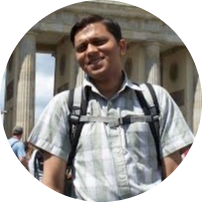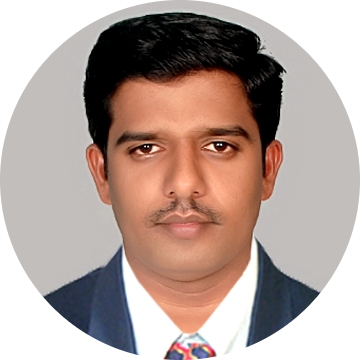Symposium on Data Analytics in Bioinformatics (Feb 3, 2018)
SPEAKERS:

"Compilation, Curation And Exploration of the Phytochemical Space Of Indian Medicinal Plants"
Phytochemical constituents of medicinal plants encompass a diverse chemical space for drug discovery. India is rich with a flora of indigenous medicinal plants that have been used for centuries in traditional Indian medicine to treat human maladies. A comprehensive online resource on the phytochemistry of Indian medicinal plants will enable computational approaches towards natural product-based drug discovery. In this talk, I will present, IMPPAT, the most-comprehensive, freely available, curated, digital database of 1742 Indian Medicinal Plants, 9596 Phytochemicals, And 1124 Therapeutic uses spanning 27074 plant-phytochemical associations and 11514 plant-therapeutic associations. Notably, our curation effort led to a non-redundant in silico library of 9596 phytochemicals with standard chemical identifiers and structure information. Using cheminformatic approaches, we have computed the physicochemical, ADMET and drug-likeliness properties of the IMPPAT phytochemicals. We show that the structural complexity of IMPPAT phytochemicals differ from libraries of commercial compounds or diversity-oriented synthesis compounds while being similar to other libraries of natural products. Within IMPPAT, we have filtered a subset of 960 potential druggable phytochemicals, of which majority have no significant similarity to existing FDA approved drugs, and thus, rendering them as good candidates for prospective drugs.

"Learning And Predicting Novel Metabolic Pathways Through Subgraph Mining"
The ability to predict pathways for biosynthesis of metabolites is very important in metabolic engineering. It is possible to mine the repertoire of biochemical transformations from reaction databases, and apply the knowledge to predict reactions to synthesise new molecules. However, this usually involves a careful understanding of the mechanism and the knowledge of the exact bonds being created and broken. There is clearly a need for a method to rapidly predict reactions for synthesising new molecules, which relies only on the structures of the molecules, without demanding additional information such as thermodynamics or hand-curated reactant mapping, which are often hard to obtain accurately. In this talk, I will describe a robust method based on graph mining, to predict a series of biochemical transformations, which can convert between two (even previously unseen) molecules. We mine the reaction database and store reaction centres and signatures in a reaction rule network. Such a novel representation enables us to rapidly predict pathways. We also propose a heuristic that predominantly recovers natural biosynthetic pathways from amongst hundreds of alternatives, through a directed search of the reaction rule network, enabling us to provide a reliable ranking of pathways. Our approach scales well, even to databases with>100,000 reactions.

"Global Recombination Landscape in Human: Insights From an In-Depth Analysis Of The 1000 Genomes Project"
Meiotic recombination shuffles different alleles along the chromosomes generating the genetic diversity in the offspring. This process is vital for the adaptation and evolution of a species. Study of the plasticity of recombination rates and presence of hotspots of recombination in the human genome has been of interest lately. An in-depth analysis of the 1000 Genomes Project (1KGP) has been made to study the fine-scale variation in the autosomal recombination rates across 20 human populations to uncover the global recombination landscape in human. The results showed more than 80K hotspots and coldspots which are subsequently validated using a high-resolution pedigree based genetic map. Our analysis yielded clusters of continental groups, reflecting their shared ancestry and genetic similarities in the recombination rates that are linked to their migratory and evolutionary histories. Genomic locations and strengths of hotspots and coldspots across all the populations studied have also been generated, the details of which will be presented.

"Computational Techniques in Data Integration And Big Data Analytics for Bioinformatics"
An individual's phenome, shaped by diverse factors, poses challenges in defining a reference genome of healthy humans. Genomic variations influenced by ancestry, lifestyle, and environmental factors contribute to this complexity. Ayurveda, an ancient Indian medical system, categorizes individuals into constitution types (Prakriti), influencing disease susceptibility and management. Ayurgenomics integrates Ayurvedic phenotypic classification with genomics and modern medicine, offering a stratified approach for predictive marker discovery and advancing precision medicine.
Copyright © 2023-2024 - All Rights Reserved - COMBIGS, SASTRA DEEMED UNIVERSITY
Template by OS Templates